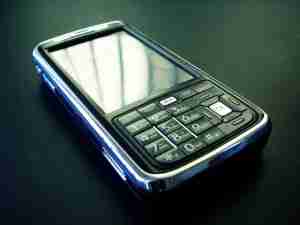Best Practices for Mobile Coupons from MMA
 Mobile Coupons and rebates are on the rise. The appeal to consumers lies mainly in convenience. Face it, traditional coupons are basically inconvenient from start to finish, from clipping them out, to carrying them around, to digging for them at the point of sale. Even electronic coupons that you find on the web need to be printed, cut out, and taken to the store. So, mobile coupons are one way that companies can provide convenience and savings for customers, as well as boost sale and customer loyalty for their business.
Mobile Coupons and rebates are on the rise. The appeal to consumers lies mainly in convenience. Face it, traditional coupons are basically inconvenient from start to finish, from clipping them out, to carrying them around, to digging for them at the point of sale. Even electronic coupons that you find on the web need to be printed, cut out, and taken to the store. So, mobile coupons are one way that companies can provide convenience and savings for customers, as well as boost sale and customer loyalty for their business.
Mobile coupons have the same purpose and function as traditional coupons, but the redemption process is carried out without the coupon ever having to be transferred to paper. The whole process simply takes place on a consumer’s mobile phone--from the coupon being discovered or delivered, to the consumer redeeming the coupon at the point of sale, often with the bar code being scanned right off of the consumer's phone.
In order for companies to understand how to employ mobile coupons in a way that is efficient and effective for all parties involved, the Mobile Marketing Association (MMA), a non-profit trade association that promotes the mobile marketing industry worldwide, has published the “Guidelines and Best Practices in Mobile Price Promotions” for North America, put together by the MMA’s Mobile Couponing Task Force.
Mobile coupons can be delivered in wide variety of methods, including SMS, MMS, mobile apps, the mobile web, web ads, email, mobile banner ads, Bluetooth, NFC, or 1D/2D bar code scanning. Just like traditional coupons, they must include a call-to-action and the disclosure of information regarding the deal. A call-to-action for a mobile coupon could be asking the consumer to enter their phone number in an online form in order to receive text messages containing coupons or instructions on how to receive coupons. Or, the consumer might be requested to send a text message or code in order to receive coupons or instructions. Or they may need to go to a website and download the coupon, or scan a bar code to receive the coupon on their phone, or even have the coupons attached to their loyalty card or user ID. As you can see, there are a surprising number of possibilities.
To redeem the mobile coupons, consumers present their cell phone, with the coupon or unique identifier, at the retailer’s point of sale. The checkout person might scan a bar code from the mobile phone, or a code may be read off the phone and typed in to the computer.
Mobile coupon campaigns involve five stages, according to MMA’s document: setup and communication, discovery and acquisition, presentation, validation and redemption, and reconciliation. It’s important for businesses to understand these stages, and to have guidelines for each of these stages in order to ensure that their campaign is successful and effective.
The best practices are intended to apply broadly, to protect consumers and businesses, and to provide reliability and integrity across the coupon distribution industry.
In summary, the Best Practices laid out by MMA are:
1. To be honest, true and fair, and to use good taste. In other words, don’t try to mislead or deceive your customers, and don’t be offensive.
2. Consider your product type and the target audience to make tasteful decisions on placement and presentation of the mobile coupons.
3. Be transparent. The customer should not have to guess who you are or what the product is that is being promoted—this information should be visually prominent and clearly communicated. Rules regarding the coupon (such as expiration dates or limits) should be clearly displayed, and there should be a means for customers to provide feedback.
4. Prices and values should be presented in a factual, prominent, and fair manner.
5. Businesses should respect consumer privacy, allowing them to opt in or out, and making terms and conditions easily available.
The document goes on to explain more specific guidelines and best practices for things like contests and sweepstakes, as well as coupons for food, dietary supplements, vitamins, drugs, alcohol, and personal health products. It also spells out helpful guidelines for including consumer notifications.
Greg Stuart, CEO of MMA, says “Our research shows that consumer interest in mobile coupons continues to grow, giving brands, merchants and marketers a powerful new opportunity to establish and maintain relationships with consumers.” He believes that MMA’s Best Practices can, “give the ecosystem an industry-standard framework for capitalizing on that opportunity while protecting the consumer experience.”
To see the complete “Guidelines and Best Practices in Mobile Price Promotions,” visit http://mmaglobal.com/mobilecouponguidelines.pdf
About the Mobile Marketing Association (MMA)
The Mobile Marketing Association (MMA) is the premier global non-profit trade association representing all players in the mobile marketing value chain. With more than 700 member companies, the MMA is an action-oriented organization with global focus, regional actions and local relevance. The MMA’s primary focus is to establish mobile as an indispensable part of the marketing mix. The MMA works to promote, educate, measure, guide and protect the mobile marketing industry worldwide. The MMA’s global headquarters are located in the United States and it has regional chapters including North America (NA), Europe, Middle East and Africa (EMEA), Latin America (LATAM) and Asia Pacific (APAC) branches. For more information, please visit www.mmaglobal.com.
Related articles:
Mobile Coupons and Advertising to reach $8 billion by 2012 per Juniper Research
